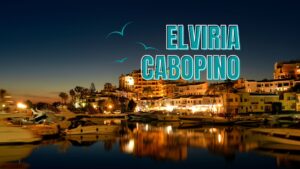Andalucia, located in the south of Spain, is a region with a rich cultural and historical heritage.
From prehistoric times to the present day, this region has been home to many civilizations, each leaving its mark on the land. In this article, we will explore the 13 oldest monuments in Andalucia, taking you on a journey through time.
Dolmen de Menga
The Dolmen de Menga is located in Antequera and is considered one of the oldest monuments in Europe. It was built in the Neolithic period, around 3750 BCE, and is a megalithic tomb made up of several large stones.
The Dolmen de Menga is one of the most impressive megalithic structures in Andalucia and is a must-see for anyone interested in the region’s prehistoric past.
Dolmen de Viera
The Dolmen de Viera is also located in Antequera and is another impressive megalithic structure from the Neolithic period.
It was built around the same time as the Dolmen de Menga and is made up of several large stones.
The Dolmen de Viera is smaller than the Dolmen de Menga but is still an important monument in Andalucia’s prehistoric history.
Dolme de Viera is only 70meters from Dolme de Menga
Alcazaba of Malaga
The Alcazaba of Malaga is a Moorish castle that was built in the 11th century.
It is one of the oldest fortresses in Spain and is located on a hill overlooking the city of Malaga.
The Alcazaba was built by the Moors during their rule of Andalucia and is an important example of Moorish architecture.
Gibralfaro Castle
Gibralfaro Castle is located in Malaga and was built in the 14th century by Yusuf I of Granada.
It was built on a hill next to the Alcazaba of Malaga and was used as a military fortress.
Gibralfaro Castle offers stunning views of the city and is an important part of Andalucia’s history.
Roman Theatre of Malaga
The Roman Theatre of Malaga was built in the 1st century BCE and was used for performances and shows. It was rediscovered in the 1950s and has since been restored.
The Roman Theatre of Malaga is the oldest monument in Malaga
The theatre is located in the centre of Malaga and is a popular tourist attraction.
Italica
Italica is an ancient Roman city located near Seville.
It was founded in 206 BCE and was an important city during the Roman period.
The city was abandoned in the 3rd century and was rediscovered in the 18th century.
Italica is now an important archaeological site and is home to many well-preserved Roman ruins, including an amphitheatre, a theatre, and the remains of houses and streets.
Baelo Claudia
Baelo Claudia is a Roman town located on the coast of Andalucia.
It was founded in the 2nd century BCE and was an important centre for the production of fish sauce (garum).
The town was abandoned in the 6th century and was rediscovered in the 20th century.
Baelo Claudia is now an important archaeological site and is home to many well-preserved Roman ruins, including a temple, a theatre, and the remains of houses and streets.
Medina Azahara
Medina Azahara is a ruined medieval Islamic city located near Cordoba.
It was built in the 10th century and was the capital of the Caliphate of Cordoba.
The city was destroyed in the 11th century and was rediscovered in the early 20th century.
Medina Azahara is now an important archaeological site and is home to many well-preserved Islamic ruins, including palaces, mosques, and administrative buildings.
Alhambra
The Alhambra is a palace and fortress complex located in Granada.
It was built during the 14th century by the Nasrid dynasty and is an important example of Islamic architecture in Andalucia.
The Alhambra is a UNESCO World Heritage Site and is one of the most visited tourist attractions in Spain with around 3 million visitors per year.
Mezquita of Cordoba
The Mezquita of Cordoba, also known as the Great Mosque of Cordoba, is a mosque-cathedral located in Cordoba.
It was built in the 8th century and was expanded over the centuries.
The Mezquita is an important example of Islamic architecture in Andalucia and is a UNESCO World Heritage Site.
Monastery of San Jeronimo
The Monastery of San Jeronimo is a monastery located in Granada. It was built in the 16th century and is an important example of Renaissance architecture in Andalucia. The monastery is home to many works of art and is a popular tourist attraction.
Cathedral of Seville
The Cathedral of Seville is a cathedral located in Seville.
It was built in the 15th century on the site of a mosque and is an important example of Gothic architecture in Andalucia.
The cathedral is the third-largest church in the world and is a UNESCO World Heritage Site.
Real Alcazar of Seville
The Real Alcazar of Seville is a royal palace located in Seville.
It was built in the 14th century and is an important example of Mudéjar architecture in Andalucia.
The palace is still used by the Spanish royal family and is a UNESCO World Heritage Site.
Conclusion
Andalucia is home to many impressive monuments that span several periods of history.
From the prehistoric Dolmens of Antequera to the Islamic palaces of Medina Azahara and the Alhambra, Andalucia’s rich cultural and historical heritage is a testament to the many civilizations that have called this region home.
Each of these 13 monuments is a must-see for anyone interested in Andalucia’s history, architecture, and art.



